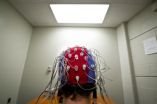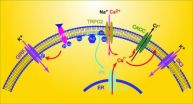(Press-News.org) CAMBRIDGE, Mass. -- Interactive proofs, which MIT researchers helped pioneer, have emerged as one of the major research topics in theoretical computer science. In the classic interactive proof, a questioner with limited computational power tries to extract reliable information from a computationally powerful but unreliable respondent. Interactive proofs are the basis of cryptographic systems now in wide use, but for computer scientists, they're just as important for the insight they provide into the complexity of computational problems.
Twenty years ago, researchers showed that if the questioner in an interactive proof is able to query multiple omniscient respondents — which are unable to communicate with each other — it can extract information much more efficiently than it could from a single respondent. As quantum computing became a more popular research topic, however, computer scientists began to wonder whether such multiple-respondent — or "multiprover" — systems would still work if the respondents were able to perform measurements on physical particles that were "entangled," meaning that their quantum properties were dependent on each other.
At the IEEE Symposium on Foundations of Computer Science in October, Thomas Vidick, a postdoc at MIT's Computer Science and Artificial Intelligence Laboratory, and Tsuyoshi Ito, a researcher at NEC Labs in Princeton, N.J., finally answer that question: Yes, there are multiprover interactive proofs that hold up against entangled respondents. That answer is good news for cryptographers, but it's bad news for quantum physicists, because it proves that there's no easy way to devise experiments that illustrate the differences between classical and quantum physical systems.
It's also something of a surprise, because when the question was first posed, it was immediately clear that some multiprover proofs were not resilient against entanglement. Vidick and Ito didn't devise the proof whose resilience they prove, but they did develop new tools for analyzing it.
In an interactive proof, a questioner asks a series of questions, each of which constrains the range of possible answers to the next question. The questioner doesn't have the power to compute valid answers itself, but it does have the power to determine whether each new answer meets the constraints imposed by the previous ones. After enough questions, the questioner will either expose a contradiction or reduce the probability that the respondent is cheating to near zero.
Multiprover proofs are so much more efficient than single-respondent proofs because none of the respondents knows the constraints imposed by the others' answers. Consequently, contradictions are much more likely if any respondent tries to cheat.
But if the respondents have access to particles that are entangled with each other — say, electrons that were orbiting the same atom but were subsequently separated — they can perform measurements — of, say, the spins of select electrons — that will enable them to coordinate their answers. That's enough to thwart some interactive proofs.
The proof that Vidick and Ito analyzed is designed to make cheating difficult by disguising the questioner's intent. To get a sense of how it works, imagine a graph that in some sense plots questions against answers, and suppose that the questioner is interested in two answers, which would be depicted on the graph as two points. Instead of asking the two questions of interest, however, the questioner asks at least three different questions. If the answers to those questions fall on a single line, then so do the answers that the questioner really cares about, which can now be calculated. If the answers don't fall on a line, then at least one of the respondents is trying to cheat.
"That's basically the idea, except that you do it in a much more high-dimensional way," Vidick says. "Instead of having two dimensions, you have 'N' dimensions, and you think of all the questions and answers as being a small, N-dimensional cube."
This type of proof turns out to be immune to quantum entanglement. But demonstrating that required Vidick and Ito to develop a new analytic framework for multiprover proofs.
According to the weird rules of quantum mechanics, until a measurement is performed on a quantum particle, the property being measured has no definite value; measuring snaps the particle into a definite state, but that state is drawn randomly from a probability distribution of possible states.
The problem is that, when particles are entangled, their probability distributions can't be treated separately: They're really part of a single big distribution. But any mathematical description of that distribution supposes a bird's-eye perspective that no respondent in a multiprover proof would have. Finding a way to do justice to both the connection between the measurements and the separation of the measurers proved enormously difficult. "It took Tsuyoshi and me about a year and a half," Vidick says. "But in fact, one could say I've been working on this since 2006. My very first paper was on exactly the same topic."
### Written by Larry Hardesty, MIT News Office
MIT News Release: 10-year-old problem in theoretical computer science falls
Interactive proofs -- mathematical games that underlie much modern cryptography -- work even if players try to use quantum information to cheat
2012-07-30
ELSE PRESS RELEASES FROM THIS DATE:
When rules change, brain falters
2012-07-30
EAST LANSING, Mich. — For the human brain, learning a new task when rules change can be a surprisingly difficult process marred by repeated mistakes, according to a new study by Michigan State University psychology researchers.
Imagine traveling to Ireland and suddenly having to drive on the left side of the road. The brain, trained for right-side driving, becomes overburdened trying to suppress the old rules while simultaneously focusing on the new rules, said Hans Schroder, primary researcher on the study.
"There's so much conflict in your brain," said Schroder, "that ...
Gene mutations linked to most cases of rare disorder -- Alternating Hemoplegia of Childhood
2012-07-30
(SALT LAKE CITY)—Alternating hemiplegia of childhood (AHC) is a rare disorder that usually begins in infancy, with intermittent episodes of paralysis and stiffness, first affecting one side of the body, then the other. Symptoms mysteriously appear and disappear, again and again, and affected children often experience dozens of episodes per week. As they get older, children fall progressively behind their peers in both intellectual abilities and motor skills, and more than half develop epilepsy. Unfortunately, medications that work for epilepsy have been unsuccessful in ...
Smell the potassium
2012-07-30
Kansas City, Missouri - The vomeronasal organ (VNO) is one of evolution's most direct enforcers. From its niche within the nose in most land-based vertebrates, it detects pheromones and triggers corresponding basic-instinct behaviors, from compulsive mating to male-on-male death matches. A new study from the Stowers Institute for Medical Research, published online in Nature Neuroscience on July 29, 2012, extends the scientific understanding of how pheromones activate the VNO, and has implications for sensory transduction experiments in other fields.
"We found two new ...
Cutting the graphene cake
2012-07-30
Sandwiching individual graphene sheets between insulating layers in order to produce electrical devices with unique new properties, the method could open up a new dimension of physics research.
Writing in Nature Materials, the scientists show that a new side-view imaging technique can be used to visualize the individual atomic layers of graphene within the devices they have built. They found that the structures were almost perfect even when more than 10 different layers were used to build the stack.
This surprising result indicates that the latest techniques of isolating ...
Cell receptor has proclivity for T helper 9 cells, airway inflammation
2012-07-30
BOSTON, MA—A research team led by Xian Chang Li, MD, PhD, Brigham and Women's Hospital (BWH) Transplantation Research Center, has shed light on how a population of lymphocytes, called CD4+ T cells, mature into various subsets of adult T helper cells. In particular, the team uncovered that a particular cell surface molecule, known as OX40, is a powerful inducer of new T helper cells that make copious amounts of interleukin-9 (IL-9) (and therefore called TH9 cells) in vitro; such TH9 cells are responsible for ongoing inflammation in the airways in the lungs in vivo.
The ...
Massachusetts Eye and Ear researchers discover elusive gene that causes a form of blindness from birth
2012-07-30
BOSTON (July 29, 2012) – Researchers from the Massachusetts Eye and Ear Infirmary, The Children's Hospital of Philadelphia, Loyola University Chicago Health Sciences Division and their collaborators have isolated an elusive human gene that causes a common form of Leber congenital amaurosis (LCA), a relatively rare but devastating form of early-onset blindness. The new LCA gene is called NMNAT1. Finding the specific gene mutated in patients with LCA is the first step towards developing sight-saving gene therapy.
LCA is an inherited retinal degenerative disease characterized ...
New discovery of how carbon is stored in the Southern Ocean
2012-07-30
A team of British and Australian scientists has discovered an important method of how carbon is drawn down from the surface of the Southern Ocean to the deep waters beneath. The Southern Ocean is an important carbon sink in the world – around 40% of the annual global CO2 emissions absorbed by the world's oceans enter through this region.
Reporting this week in the journal Nature Geoscience, scientists from British Antarctic Survey (BAS) and Australia's national research agency, the Commonwealth Scientific and Industrial Research Organisation (CSIRO), reveal that rather ...
Gene discovery set to help with mysterious paralysis of childhood
2012-07-30
DURHAM, N.C. – Alternating hemiplegia of childhood (AHC) is a very rare disorder that causes paralysis that freezes one side of the body and then the other in devastating bouts that arise at unpredictable intervals. Seizures, learning disabilities and difficulty walking are common among patients with this diagnosis.
Researchers at Duke University Medical Center have now discovered that mutations in one gene cause the disease in the majority of patients with a diagnosis of AHC, and because of the root problem they discovered, a treatment may become possible.
The study ...
Giant ice avalanches on Iapetus provide clue to extreme slippage elsewhere in the solar system
2012-07-30
"We see landslides everywhere in the solar system," says Kelsi Singer, graduate student in earth and planetary sciences in Arts & Sciences at Washington University in St. Louis, "but Saturn's icy moon Iapetus has more giant landslides than any body other than Mars."
The reason, says William McKinnon, PhD, professor of earth and planetary sciences, is Iapetus' spectacular topography. "Not only is the moon out-of-round, but the giant impact basins are very deep, and there's this great mountain ridge that's 20 kilometers (12 miles) high, far higher than Mount Everest.
"So ...
Magnetic field, mantle convection and tectonics
2012-07-30
On a time scale of tens to hundreds of millions of years, the geomagnetic field may be influenced by currents in the mantle. The frequent polarity reversals of Earth's magnetic field can also be connected with processes in the mantle. These are the research results presented by a group of geoscientists in the new advance edition of "Nature Geoscience" on Sunday, July 29th. The results show how the rapid processes in the outer core, which flows at rates of up to about one millimeter per second, are coupled with the processes in the mantle, which occur more in the velocity ...
LAST 30 PRESS RELEASES:
First Editorial of 2026: Resisting AI slop
Joint ground- and space-based observations reveal Saturn-mass rogue planet
Inheritable genetic variant offers protection against blood cancer risk and progression
Pigs settled Pacific islands alongside early human voyagers
A Coral reef’s daily pulse reshapes microbes in surrounding waters
EAST Tokamak experiments exceed plasma density limit, offering new approach to fusion ignition
Groundbreaking discovery reveals Africa’s oldest cremation pyre and complex ritual practices
First breathing ‘lung-on-chip’ developed using genetically identical cells
How people moved pigs across the Pacific
Interaction of climate change and human activity and its impact on plant diversity in Qinghai-Tibet plateau
From addressing uncertainty to national strategy: an interpretation of Professor Lim Siong Guan’s views
Clinical trials on AI language model use in digestive healthcare
Scientists improve robotic visual–inertial trajectory localization accuracy using cross-modal interaction and selection techniques
Correlation between cancer cachexia and immune-related adverse events in HCC
Human adipose tissue: a new source for functional organoids
Metro lines double as freight highways during off-peak hours, Beijing study shows
Biomedical functions and applications of nanomaterials in tumor diagnosis and treatment: perspectives from ophthalmic oncology
3D imaging unveils how passivation improves perovskite solar cell performance
Enriching framework Al sites in 8-membered rings of Cu-SSZ-39 zeolite to enhance low-temperature ammonia selective catalytic reduction performance
AI-powered RNA drug development: a new frontier in therapeutics
Decoupling the HOR enhancement on PtRu: Dynamically matching interfacial water to reaction coordinates
Sulfur isn’t poisonous when it synergistically acts with phosphine in olefins hydroformylation
URI researchers uncover molecular mechanisms behind speciation in corals
Chitin based carbon aerogel offers a cleaner way to store thermal energy
Tracing hidden sources of nitrate pollution in rapidly changing rural urban landscapes
Viruses on plastic pollution may quietly accelerate the spread of antibiotic resistance
Three UH Rainbow Babies & Children’s faculty elected to prestigious American Pediatric Society
Tunnel resilience models unveiled to aid post-earthquake recovery
Satellite communication systems: the future of 5G/6G connectivity
Space computing power networks: a new frontier for satellite technologies
[Press-News.org] MIT News Release: 10-year-old problem in theoretical computer science fallsInteractive proofs -- mathematical games that underlie much modern cryptography -- work even if players try to use quantum information to cheat


